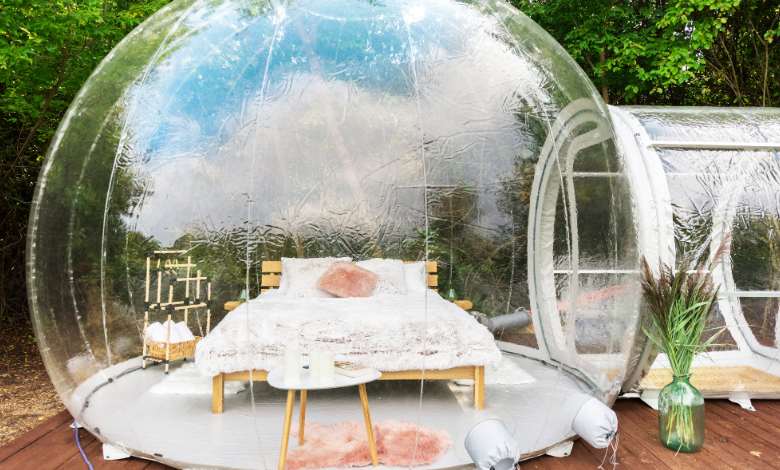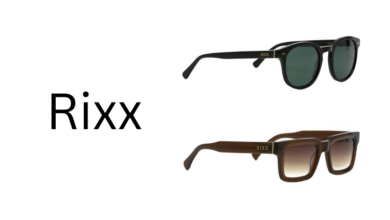Bubble House: A Complete Guide to Living, Traveling, and Staying in a Transparent Dome

When I first saw a bubble house, it looked like something out of a futuristic movie. The idea of living inside a clear dome, surrounded by nature but still sheltered, felt almost unreal. Bubble houses are not only eye-catching but also a growing trend in travel, eco-living, and unique architecture. Over the years, they’ve evolved from experimental designs to popular vacation rentals and even sustainable housing options. In this article, I’ll walk you through everything you need to know about bubble houses—from their history and design to the experience of staying in one, along with costs, sustainability, and what the future may hold.
What is a Bubble House?
A bubble house, sometimes called a bubble home or inflatable dome, is a round, dome-shaped structure made mostly of transparent or semi-transparent materials like PVC, polycarbonate, or other flexible plastics. Some bubble houses are inflatable and portable, while others are permanent structures built with stronger materials.
What makes them unique is their open, panoramic design. Imagine lying in bed while watching the stars through the clear ceiling or waking up to a sunrise with nothing blocking your view. That’s what a bubble house offers. It blurs the line between indoor comfort and outdoor beauty.
The History and Idea Behind Bubble Homes
The concept of the bubble house dates back to experimental architects in the mid-20th century who wanted to break away from square and rectangular designs. French architect Jean-Benjamin Maneval created the famous “Bulle Six Coques” (Six-Shell Bubble House) in the 1960s. It was designed as a futuristic, modular home with curved shapes, offering an alternative to traditional buildings.
Although Maneval’s project didn’t become mainstream housing, it inspired later designs. Today, the bubble home idea has been revived with new technology, especially in eco-tourism and luxury camping.
How Bubble Houses Are Designed
Bubble houses are usually round or oval, built either as inflatable domes or hard-shell structures.
-
Inflatable Bubble Homes: These are made with thick, transparent plastic that’s inflated using air pumps. They are temporary, often used for camping or short stays.
-
Permanent Bubble Homes: Built with materials like fiberglass, polycarbonate, or reinforced plastics, these are more durable and can last years.
-
Geodesic Bubble Domes: Inspired by Buckminster Fuller’s geodesic dome concept, these bubble houses use triangular frameworks for strength.
One fascinating aspect is the way light flows inside. Because of the curved surfaces, natural light spreads evenly, creating a bright, airy feel.
Read Also: Glow House: Creative Ideas, Designs, and Inspiration for Your Home
Types of Bubble Houses
There are three main categories:
-
Portable Inflatable Bubble Houses: Popular for backyard camping or glamping trips. They’re lightweight and easy to set up.
-
Luxury Bubble Domes: Found in resorts and hotels, offering comfort, furniture, and even air conditioning inside.
-
Eco Bubble Homes: Designed for sustainable living, often with solar panels, composting systems, and insulation for year-round use.
What it Feels Like to Live in a Bubble House
I once stayed in a bubble house during a camping trip in the Laurentians, north of Montreal. At night, I could see the stars, trees, and even a distant lake—all without leaving bed. It felt surreal, like sleeping outdoors but still safe inside.
That said, bubble houses are not for everyone. Privacy can be an issue unless they are placed in secluded areas. Also, during hot summer days, the interior can heat up quickly without proper ventilation.
Comfort depends a lot on the setup. Luxury bubble hotels may include cozy beds, climate control, and even private bathrooms, while basic inflatable bubbles are more like tents with clear walls.
How Much Does a Bubble House Cost?
The price depends on the type:
-
Inflatable bubble houses for camping: $500 to $5,000
-
Mid-range permanent bubble domes: $10,000 to $50,000
-
Custom-designed eco bubble homes: $100,000+
Extra costs include shipping, setup, and maintenance. Renting a bubble house through Airbnb can cost anywhere from $100 to $500 a night depending on location.
Bubble House Rentals, Hotels, and Airbnbs
One of the easiest ways to experience a bubble house is by renting one for a night. Bubble hotels have become a huge trend in places like Iceland, Canada, France, and Spain. These locations often place bubble domes in forests, deserts, or near mountains to maximize the view.
In Quebec, for example, several eco-resorts now offer transparent bubble stays in the woods. It’s a romantic option for couples or anyone wanting to disconnect from city life.
Sustainability and Eco-Friendliness
Many bubble houses are designed with sustainability in mind. Since they use fewer materials than traditional homes, their environmental footprint can be smaller. They also often integrate renewable energy, rainwater collection, and natural ventilation.
However, inflatable models made from plastics may not always be eco-friendly unless recycled or used long-term. Still, compared to large-scale concrete housing, bubble homes represent a lighter impact on the planet.
Bubble Houses vs Other Alternative Homes
Bubble houses often get compared to:
-
Tiny Houses: Both are small-scale living solutions, but bubble homes emphasize openness and connection with nature, while tiny homes focus on efficient storage.
-
Yurts: Similar in shape, but yurts use fabric and wood rather than plastic.
-
Geodesic Domes: These share the futuristic dome shape but are more structured and less transparent.
Pros and Cons of Bubble Houses
Pros:
-
Panoramic views of nature
-
Unique travel experience
-
Sustainable design potential
-
Portable and lightweight (inflatable models)
-
Perfect for stargazing and relaxation
Cons:
-
Limited privacy
-
Vulnerable to extreme weather
-
Shorter lifespan for inflatable models
-
Can get hot in summer without ventilation
-
Not always practical for permanent living
Future of Bubble Living
As eco-tourism and alternative housing grow, bubble houses are becoming more popular worldwide. Resorts are investing in bubble hotels, and architects are exploring how bubbles can be part of sustainable housing projects.
It’s not unrealistic to imagine future neighborhoods with a mix of traditional and bubble-inspired homes. For now, most people experience them as a travel novelty, but the trend suggests a growing market.
Conclusion
Bubble houses may not replace traditional homes anytime soon, but they are a fascinating example of how design can change the way we connect with nature. Whether you’re renting one for a weekend, considering buying one for your backyard, or just curious about their history, bubble houses are worth exploring. They offer something rare: the comfort of shelter while keeping you close to the outdoors.
FAQs
Q: Are bubble houses safe in bad weather?
A: Inflatable models can withstand light rain and wind, but they’re not ideal for storms. Permanent bubble homes are stronger and more weather-resistant.
Q: Can you live in a bubble house full-time?
A: Some eco bubble homes are built for year-round living, but most bubble houses are better suited for short stays.
Q: How do you keep a bubble house private?
A: Many rentals place them in secluded forests or use curtains inside for added privacy.
Q: Do bubble houses have bathrooms?
A: Luxury bubble hotels often include attached facilities, but portable bubbles usually do not.



